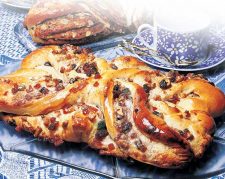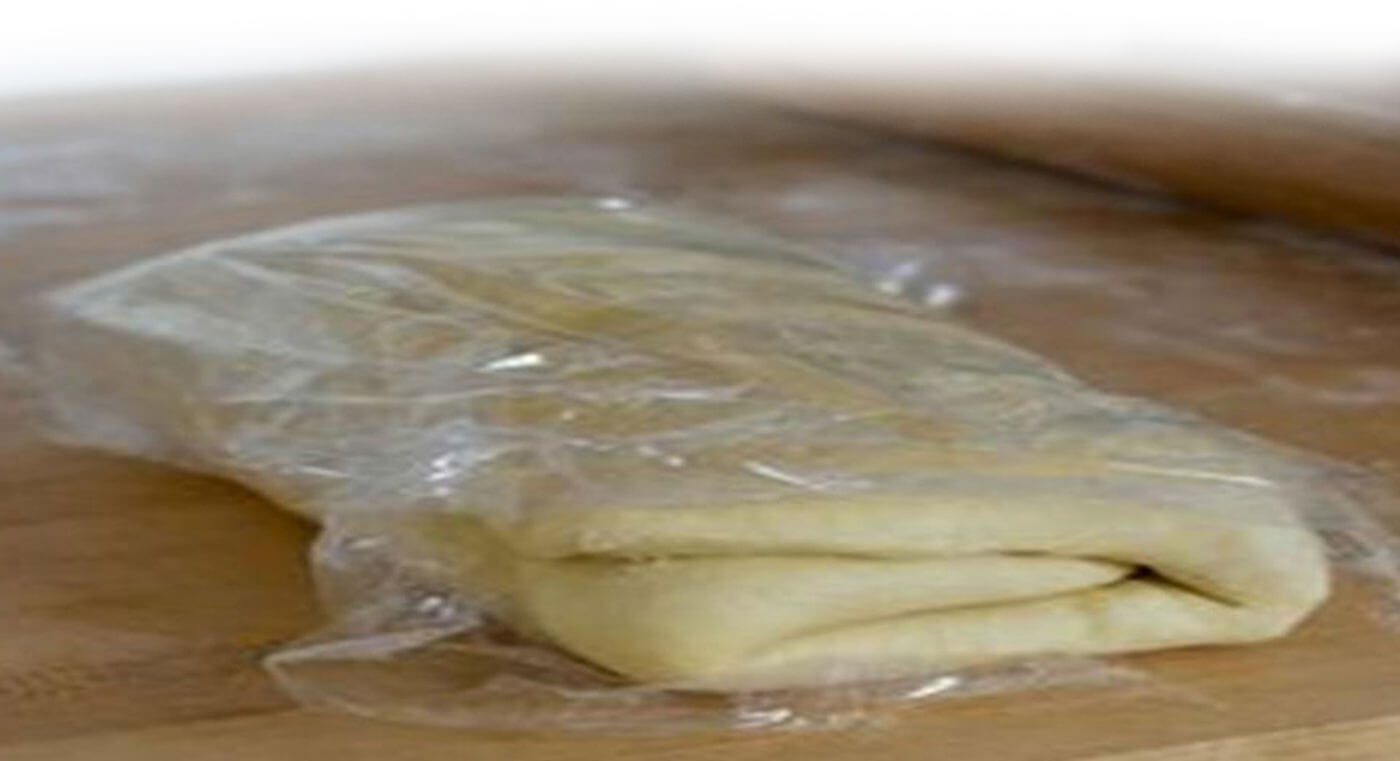Makes: 12 / 24 / 36 Danish Pastries Oven: 220 °C / 425 °F
Preparation Time: 1 hour Baking Time: 15 – 20 minutes
Ingredients
Small – Makes: 12 Pastries
| 240 | g | Cake flour ( 2 x 250 ml / |
| 2 | ml | Salt ( ¼ tsp ) |
| 30 | ml | Sugar ( 2 tbsp ) |
| 30 | g | Butter |
| 10 | g | Anchor Instant Yeast ( 1 packet ) |
| 80 | ml | Lukewarm milk ( ⅓ cup ) |
| 1 | Large egg, beaten | |
| 5 | ml | Lemon juice ( 1 tsp ) |
| 100 | g | Butter, divided into 7 pieces |
Medium – Makes: 24 Pastries
| 360 | g | Cake flour ( 3 x 250 ml / |
| 2 | ml | Salt ( ¼ tsp ) |
| 45 | ml | Sugar ( 3 tbsp ) |
| 30 | g | Butter |
| 10 | g | Anchor Instant Yeast ( 1 packet ) |
| 180 | ml | Lukewarm milk ( ¾ cup ) |
| 1 | Large egg, beaten | |
| 5 | ml | Lemon juice ( 1 tsp ) |
| 200 | g | Butter, divided into 7 pieces |
Large – Makes: 36 Pastries
| 720 | g | Cake flour ( 6 x 250 ml / |
| 5 | ml | Salt ( 1 tsp ) |
| 60 | ml | Sugar ( 4 tbsp ) |
| 45 | g | Butter ( 3 tbsp ) |
| 10 | g | Anchor Instant Yeast ( 1 packet ) |
| 375 | ml | Lukewarm milk ( 1½ cup ) |
| 2 | Large eggs, beaten | |
| 10 | ml | Lemon juice ( 2 tsp ) |
| 375 | g | Butter, divided into 7 pieces |
Sealing Of Danish Pastry
| Use lightly beaten egg white |
Glaze
| Mix 250 ml ( 1 cup ) sugar with 125 ml (½ cup) water and bring to the boil, whilst stirring. Boil for 5 minutes. Refrigerate and use when required. |
Glacé Icing
| Mix 130 g ( 250 ml / |
Method
- Mix flour, salt and sugar together and rub the small amount of butter into the flour. Add the Anchor Instant Yeast and mix.
- Mix milk, beaten egg and lemon juice together and add liquid to form soft dough.
- Knead the dough for 10 minutes until smooth and elastic.
- Place dough into a plastic bag and refrigerate for 10 minutes.
- Divide the rest of the butter into 7 equal pieces.
- Roll the dough out into a rectangle and dot two-thirds of the dough with 1 piece of butter. Fold the un-dotted third over the middle third. Fold the remaining third over the folded dough.
- 3 FOLD – form 3 layers starting from the bottom.
Step 1: Fold the uncovered third over 1 third of the dotted area (away from the body) Turn dough 90º to the right.
Step 2: Fold the last third over the already folded dough (towards the body) ⅔ – dotted with butter - Seal the edges well and turn the dough by 90º to the right. The dough should be in 3 layers and in the shape of a rectangle.
- Roll the dough once more into a rectangle and fold in three, always folding the bottom end away from you and the top end towards you. Seal the edges and turn by 90º to the right.
- Place the dough into the plastic bag, not turning it around or over. Rest the pastry in the fridge for 15 minutes. Repeat step 6 -9 for 6 more times with 15 minute resting intervals in the fridge. Allow to stand overnight. Danish pastry is best when left overnight. Remove the next day and allow the pastry to reach room temperature, but still cold. Don’t allow the dough to become warm, as the butter will then melt.
- Roll the pastry into a large square. Cut the pastry into 10 cm strips and follow the description for the Danish shapes as below.
- Place on a lightly greased baking tray, cover and allow to rise in a warm place for 20 – 25 minutes.
- Brush lightly with beaten egg and bake in a preheated oven at 220°C / 425°F for 15 – 20 minutes, or until light brown.
Danish Shapes
Bows:
Cut 10 cm squares. Place 5 ml selected filling in the centre. Brush the 2 opposite corners with egg white. Fold 1 corner over filling and overlap the other on top and seal.
Bundles:
Cut 10 cm squares. Place 5 ml selected filling in the centre. Brush the 4 corners with egg white. Fold corners towards middle to overlap on each other and seal.
Victorias:
Cut 10 cm squares. Fold the square into a triangle. Cut on both sides, from the fold side towards the corner – keeping at least 1 cm clear from the corner. Lift the top section and open flat, back to a square. Brush the inside square with egg white. Transfer strip 1 onto the other side of the square and strip 2 onto the opposite side of the square, ensuring that the edges line up. Fill the middle section with custard and fruit of choice.
Windmills:
Cut 10 cm squares. Cut diagonally from each corner into the centre, leaving the centre intact. Brush one corner with egg white and fold dough to the centre. Skip next corner and repeat previous step until complete. Fill centre with custard and fruit.
Pigs Ears:
Cut a strip of dough about 10 cm wide and 20 cm in length. Brush lightly with egg and sprinkle with cinnamon sugar. Roll each end toward the middle, until they meet. Press into an oval shape and cut into slices. Place onto a baking tray and flatten with the hand.
Pinwheels:
Follow the steps for Pigs Ears but roll up from one side only. Cut into slices, place onto baking tray and flatten slightly.
Fans:
Shape into a roll and cut 3 cm pieces. Use a wooden spoon and press each piece down in the centre, until the spirals fan out.
Sides will open and form a fan.
Combs:
Roll pastry into a rectangle and cut into 10 cm strips. Place filling down the centre of each strip. Brush edges with egg white and fold one edge over the filling onto the other edge. Seal with a fork. Cut into the folded side with scissors – keeping the sealed edge intact. Open and shape into a comb.
Apple Danish:
Cut even amounts of rectangles. Place filling onto half the rectangles. Brush the edges with egg white and cover with another rectangle. Seal the edges with a fork. Cut slits across the top.
Bow Ties:
Cut rectangles 15 cm x 6 cm. Brush with egg white and sprinkle with cinnamon sugar. Fold one end toward the middle, dividing the pastry into 3 sections. Fold last third over and now 3 layer have been formed. Cut down the centre of the folded pastry, lengthwise. Take the right end and place it into the opening, pulling it toward the left end.









